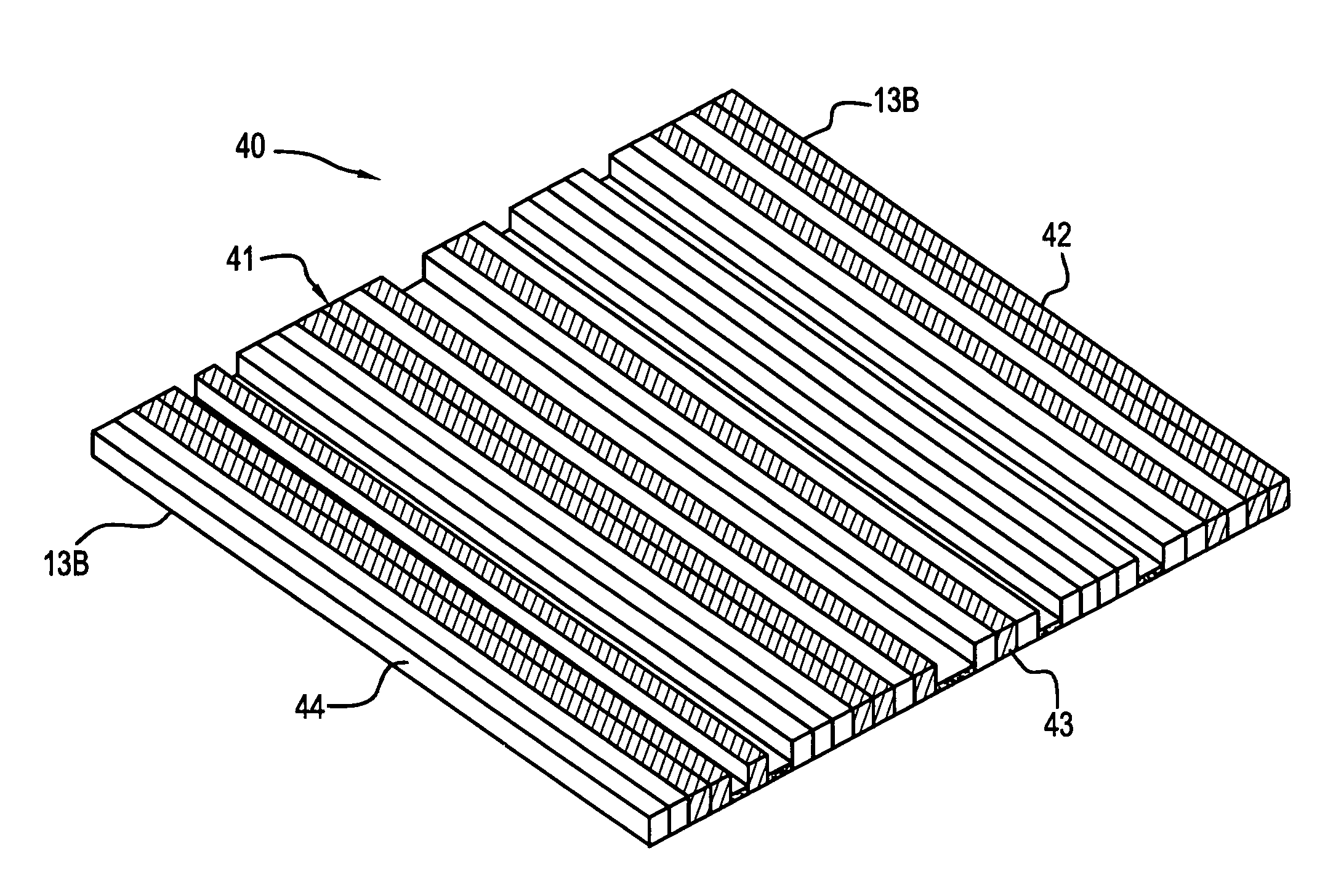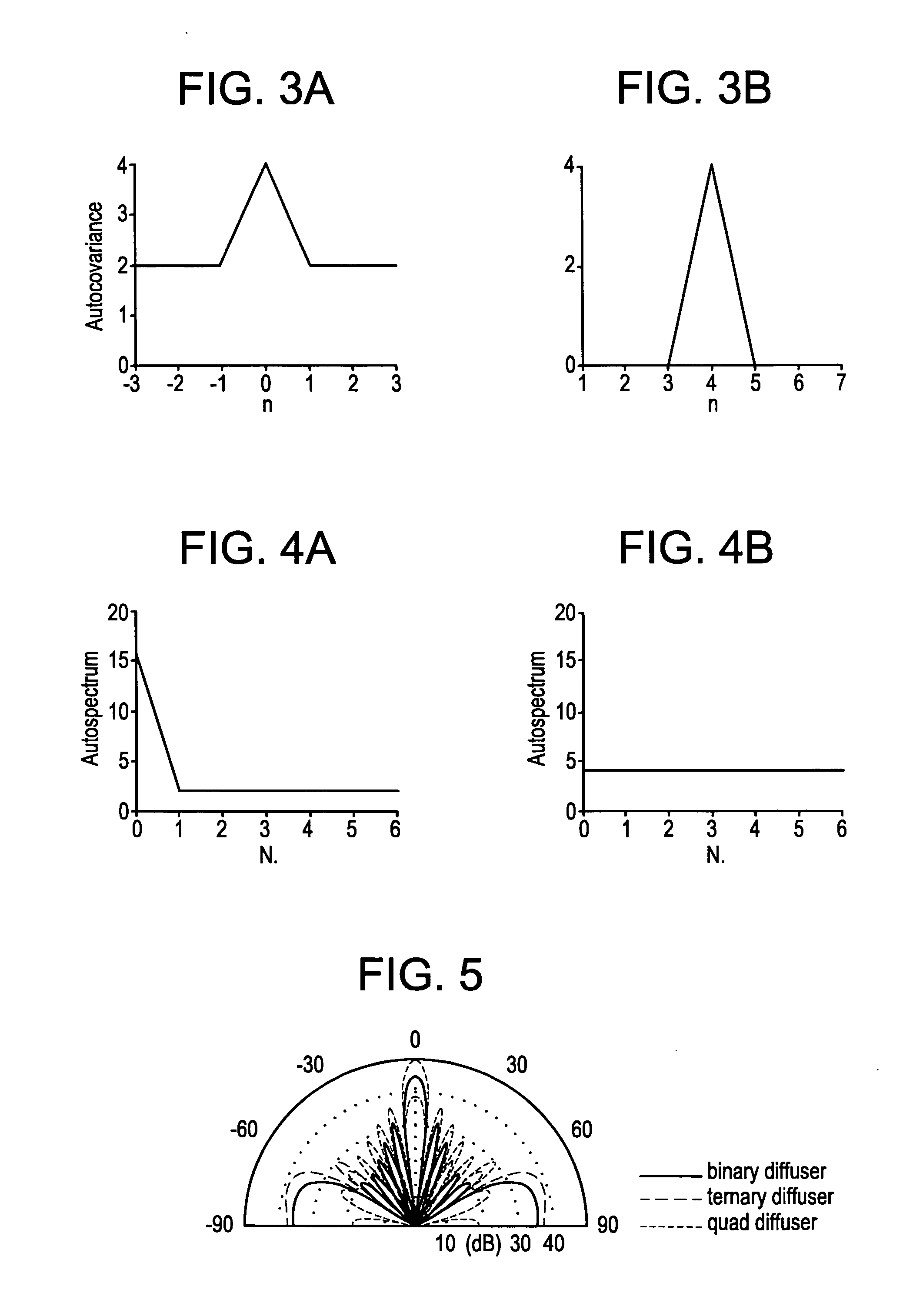Hybrid amplitude-phase grating diffusers
- Summary
- Abstract
- Description
- Claims
- Application Information
AI Technical Summary
Benefits of technology
Problems solved by technology
Method used
Image
Examples
Embodiment Construction
Short One Dimensional Ternary Sequences
[0054] To compare the performance of unipolar binary and ternary sequences, it is necessary to construct some diffusers for comparison, and for this, sequences with the best patch order are needed. For diffusers with a small number of patches, it is possible to find the best sequences by an exhaustive search of all possible combinations. It is well established that the autocovariance (or autocorrelation function) of the surface reflection factors relates to the evenness of the scattering in the far field, with the autocovariance, which most resembles the delta function being best. Consequently, a computer may be tasked to search though all possible combinations of the reflection coefficients and find the one with the best autocovariance function. To do this search, the computer requires a number to judge the quality of the sequence, and this is provided by a merit factor. The merit factor used to judge the quality of the autocovariance functi...
PUM
 Login to View More
Login to View More Abstract
Description
Claims
Application Information
 Login to View More
Login to View More - R&D
- Intellectual Property
- Life Sciences
- Materials
- Tech Scout
- Unparalleled Data Quality
- Higher Quality Content
- 60% Fewer Hallucinations
Browse by: Latest US Patents, China's latest patents, Technical Efficacy Thesaurus, Application Domain, Technology Topic, Popular Technical Reports.
© 2025 PatSnap. All rights reserved.Legal|Privacy policy|Modern Slavery Act Transparency Statement|Sitemap|About US| Contact US: help@patsnap.com



